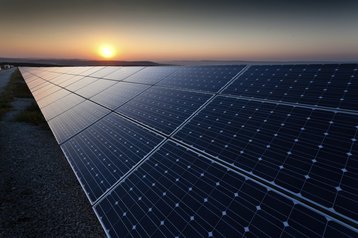As the current US administration makes changes to the rules governing emissions almost by fiat, the battle is shaping up between coal producing states, the coal industry, and the White House. Documents posted online by the government and the EPA make grandiose claims about how much money the average consumer will save based on the changes, while industry websites point out the additional costs that will need to be passed on to consumers in order for the new rules to be met and for the significant percentage of US power produced with coal to be replaced by renewable energy sources.
But the focus for both sets of claims is on the impact on the average consumer and not on the business consumer of energy. With power cost being a significant amount of the OPEX costs for any data center, policies that increase the cost of energy in the US stand to have a significant impact on business.
Simple maths
According to the US Energy Information Administration, using the most recent numbers (from 2014), total power generation in the US stood at approximately 4,093 billion kilowatt/hours. Two-thirds of that power was generated by fossil fuels; 39 percent of it from coal fired power plants. The complete breakdown of power sources is as follows:
- Coal = 39 percent
- Natural gas = 27 percent
- Nuclear = 19 percent
- Hydropower = 6 percent
- Other renewables = 7 percent
- Biomass = 1.7 percent
- Geothermal = 0.4 percent
- Solar = 0.4 percent
- Wind = 4.4 percent
- Petroleum = 1 percent
- Other gases < 1 percent
The Clean Power Plan will require coal burning power plants to reduce carbon emissions to no more than 1000 pounds of carbon per megawatt hour by 2030, a number that can’t be achieved with current commercial technologies. The power industry hasn’t been sitting on their hands with regard to carbon emissions, and compared to 2005, the levels have already been reduced by 15 percent. Critics have said that’s partly because in 2005 coal produced over 44 percent of the nation’s power while conveniently ignoring the fact that the current power production, while a smaller part of the total, actually exceeds the amount of power produced by coal in 2005.
Whichever side of the arguments for and against coal burning for power you believe, the high profile arguments are, to a large extent, masking the actual killer issue here. The government plan and its adherents call for coal based energy, and in some cases, all power produced in the US, to come from renewable sources.
With just coal as the target, that means generating (based on 2014 numbers and ignoring the continued growth and demand for power) over 1.6 billion kWh using renewable sources, which currently only deliver a third of that. When you factor in that the generation of hydropower in the US is basically stagnant, since the creation of more hydro dams is unlikely, it’s evident that the slack will need to be picked up by other renewable technologies, primarily wind and solar.
We currently subsidize energy produced via wind using the Renewable Energy Production Tax Credit at $0.023/kWh and which the current Administration is fighting to make permanent. With the Department of Energy hoping to make wind power supply 20 percent of the US grid by 2020, the annual subsidy is projected to be in the $12 billion range and would increase every year with additional production. This number is never included in the overall cost of power to consumers.
While there are a number of major wind farm projects currently being developed in the US, almost all of them are being built because of the investment by large data center operators and their power purchase commitments over at least the next 12 years. And while businesses like Apple make the claim that their investments in projects of this nature make them 100 percent green, the reality of the situation is that Apple, and every one else in the data center business, is using investments in renewables such as solar and wind to offset their actual purchase of power from non-renewable sources, primarily coal and natural gas. Data center power sources need to be reliable and consistent, two things which renewables (other than hydro and geothermal) are most definitely not.
This isn’t to say that large data center operator’s investments in wind and solar are strictly marketing ploys and window dressing; their investments are resulting in renewable energy being provided to the grid, it’s just that data centers aren’t relying on these sources for primary power other than in small facilities and test projects.
Solar power is also being pitched as a reasonable alternative to coal burning power stations. While somewhat practical for powering an individual home in an appropriate geographic zone, large scale solar farms have yet to move beyond pilot projects in the data center world. And while the power produced by solar panels is certainly a renewable resource, the actual creation of solar panels is not currently a very environmentally friendly process.
Dealing with the toxic byproducts used in most current manufacturing requires careful handling and exposes significant environmental risks. And the basic process for creating the panels requires a huge amount of power to refine quartz into metallurgical grade silicon, power that is not being provided by solar power. A detailed article on the issues with the production of solar panels, from the IEEE, can be found here.
What this boils down to is that the cost of power will need to go up, whether it’s to pay for yet unavailable carbon capture equipment, to fund the development of solar and wind farms and technologies, or just simply to meet the regulatory requirements that the government will impose. Just about every honest report on the proposed requirements makes this clear, though many claim that the long term result of the switch to renewables will be a lower cost for the production of power.
While the government has distanced itself from President Obama’s infamous 2008 quote “”Under my plan of a cap-and-trade system, electricity rates would necessarily skyrocket” and cap and trade is no longer the issue, there is little question that large consumers of electricity will need to insulate their budgets from significant increases in power costs.
For data center operators, this means looking long and hard at extended power purchase agreements, and locking in costs at as low a level as possible for as long as possible. For tenants of colocation facilities, examining how they are charged for power will need to become much more complex than the current model. Simple plans that pass through the direct cost of power with a metered rate or those that charge for power on demand will need to find even more flexible ways to keep energy costs down for the tenant.
Significant increases in costs for power will make CAPEX investments in the most energy efficient hardware possible a critical part of the planning process, and will also have major impact on where data center development occurs in the future, as some states are much better positioned to weather the upcoming power versus environment versus business battle much better than their neighbors.
If you would like to learn more about solar power register now for our “Powering Big Data with Big Solar” webinar.



